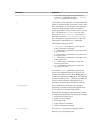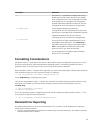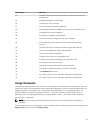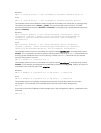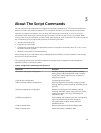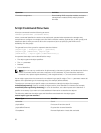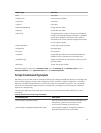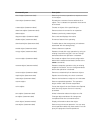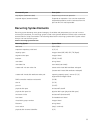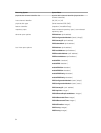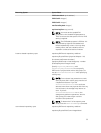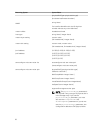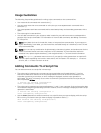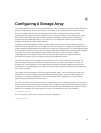
Command Syntax Description
check object {statement‑data} Starts a synchronous operation to report on errors
in the object.
clear object {statement
‑
data} Discards the contents of some attribute of an
object. This is a destructive operation that cannot
be reversed.
create object {statement
‑
data} Creates an object of the specified type.
deactivate object {statement
‑
data} Removes the environment for an operation.
delete object Deletes a previously created object.
diagnose object {statement
‑
data} Runs a test and displays the results.
disable object {statement
‑
data} Prevents a feature from operating.
download object {statement
‑
data} Transfers data to the storage array or hardware
associated with the storage array.
enable object {statement
‑
data} Allows a feature to operate.
recopy object {statement
‑
data} Restarts a virtual disk copy operation by using an
existing virtual disk copy pair. You can change
attributes before the operation is restarted.
recover object {statement
‑
data} Re-creates an object from saved configuration
data and the statement attributes (similar to the
create command).
recreate object {statement
‑
data} Restarts a snapshot operation using an existing
snapshot virtual disk. You can change attributes
before the operation is restarted.
remove object {statement
‑
data} Removes a relationship from between objects.
repair object {statement
‑
data} Repairs errors found by the check command.
reset object {statement
‑
data} Returns the hardware or object to an initial state.
resume object Starts a suspended operation. The operation
begins where it left off when suspended.
revive object Forces the object from the Failed to the Optimal
state. Use only as part of an error recovery
procedure.
save object {statement
‑
data} Writes information about the object to a file.
set object {statement
‑
data} Changes object attributes. All changes are
completed when the command returns.
show object {statement
‑
data} Displays information about the object.
start object {statement
‑
data} Starts an asynchronous operation. You can stop
some operations after they have started. You can
query the progress of some operations.
32



